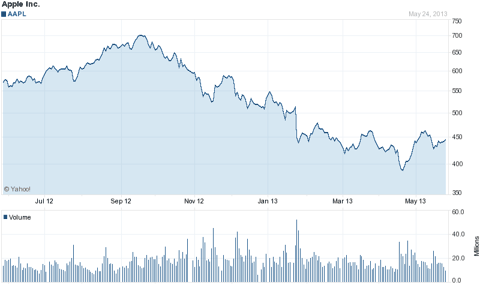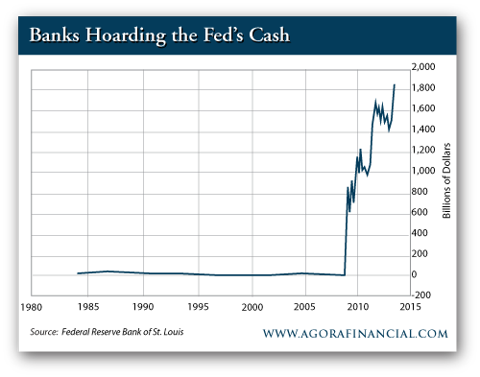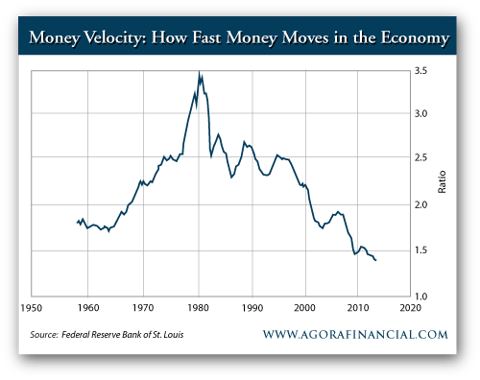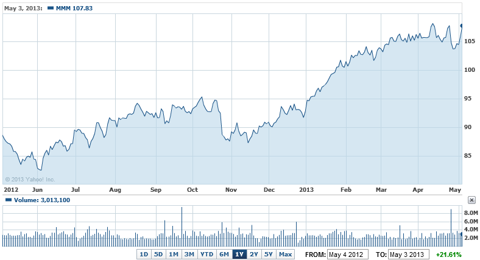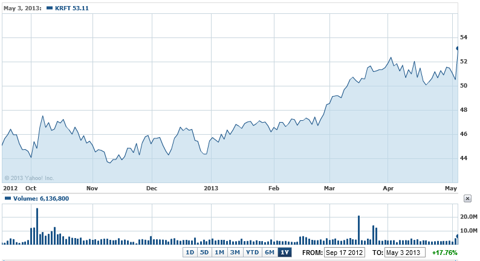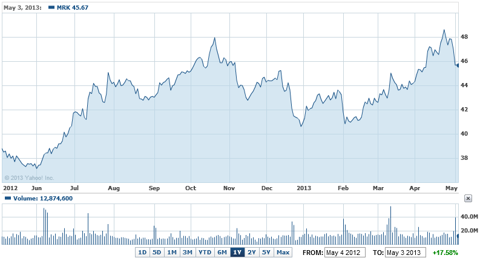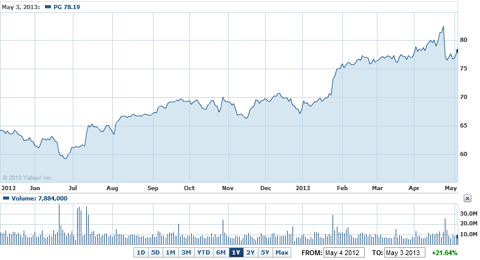The recent outbreak of supposition surrounding the Apple (AAPL) iWatch, if it exists at all, is quite humorous, with people who have no idea about anything concerning the alleged product, offering up elaborate scenarios based upon the flimsiest of rumors.
There can be no doubt that many of the Apple fans, desperate for anything to boost the company - and almost certainly have been hammered by the plummeting stock price - are attempting to create out-of-proportion buzz over a shadow product we may never see.
Even when describing it, some say "Apple's work on the iWatch appears to be substantial." How can it 'appear' to be substantial. Either it is substantial or it isn't substantial. It's a meaningless phrase apparently used to weasel out of committing to the iWatch one way or the other.
That way a huge article and attempt to market the product for free by an Apple fan-boy is offered as some type of reality, when it's largely science fiction at this time.
I'm not saying there won't be a iWatch some day from Apple, just that at this time it's all a bunch of orchestrated hype by the marketing department of the tech giant.
For example, Bloomberg, the New York Times and the Wall Street Journal all reported "independently" within a period of a week, that Apple was in fact developing an iWatch which will include a curved glass that would be able to be comfortably worn.
That was just a marketing leak from Apple to give people something to write about and spread the rumor.
What Type of Noise?
What will determine whether or not this will be a marketing initiative which will work, will depend upon which part of the iWatch story is engaged in by fans and the media.
Any positive noise for a company in traditional and non-traditional media is good, but the effectiveness of the noise is all that matters over the long haul, and we will have to wait to see how that works for Apple. Reading a lot of what people are writing, it's about 50/50 to me as to whether this will have some believable depth to the story, and is compelling enough to have some legs to it.
The story really took off when Bloomberg reported that over 100 employees at the company were working on the iWatch.
Here's one of the things Bloomberg said about the gadget:
"Features under consideration include letting users make calls, see the identity of incoming callers and check map coordinates, said one of the people, who asked not to be identified because the plans aren't public. It would also house a pedometer for counting steps and sensors for monitoring health-related data, such as heart rates..."
After reading this you can see why there is uncertainty as to whether or not this would be a winner for Apple, assuming the features listed in the quote above are part of the iWatch.
What I mean by that is the very first thing mentioned: "letting users make calls." That's about as irrelevant as you could get. Who cares about another gadget that you could call someone with? And what's exciting and new about seeing the identity of an incoming caller or checking out some map coordinates? And the pedometer and monitoring of health data? Gee, haven't we seen all that before?
The point is it is sounds so much like yesterday's products, rather than something that is really a game-changer of some sort. If the sound bite continues on like that, it will very quickly be removed from the public eye. It's simply boring. There's no other way to describe it.
Negative Versus Positive Marketing
One thing media outlets are doing is using some of the past responses to Apple product announcements and/or leaks and tie it into the negative response being received about the product.
In other words, because some of Apple's past products have been underestimated, that means the iWatch is underestimated in their eyes. That's not true of course concerning all past products, as there have been more than one product offered by Apple, including when Steve Jobs was at the helm, that failed miserably. So using past responses as a reason to make the iWatch look like a sure hit is far too premature and wrongheaded.
As a matter of fact, that's one of the weaker arguments I've heard as to why the iWatch will be a big hit by its proponents.
To think that Apple can overcome all negative sentiment concerning a product is a foolish one from an investing perspective. It hasn't done it in the past, and won't be done in the future either.
Is There an iWatch Market?
A lot of illogical people are already making it appear as if an Apple iWatch already has a built-in revenue-generator of billions. Suddenly, because Apple throws out some trial balloon marketing bomb, a wearable iWatch is indispensable. The reason why? Well, Apple apparently has said so, that's why.
Let's look at watches for a second as to their usage.
We'll forget about the telling of time, as that of course would never be why a person would buy a tech gadget; it's an ancillary part of the whole.
So what would be the use of an iWatch, if, as based upon my commentary above, some of the assumed features are extremely irrelevant and already available in other devices, including Apple's.
There is no doubt it would largely be used as a status symbol. Other than that, there's very little at this time has been offered as a reason to where it. Even if it is eventually able to communicate with other devices, so what? All you have to do is pull a gadget out of a pocket or purse to access what you want.
Now if my assessment is correct, that an iWatch is going to be acquired for the "cool" factor alone, there are some problems with it.
The first is, a watch would be considered a part of fashion ... by males and females. That means it will be very limited, as the majority of people desire continual changes in accessories when making fashion statements. That suggests there could be some quick and impressive sales of the iWatch, but once the new wears off, the limitations will be immediately understood. That isn't good for the long term success of the product.
That is important to consider about any potential market for a product, as no marketing effort will work if there isn't a market to begin with, no matter how effectively a campaign is employed. Apple may be trying to create a market for the iWatch with its marketing efforts here.
What is This Marketing Effort All About
Apple probably isn't even close to having an iWatch ready for the market, contrary to some who are trying to push the idea there will be a release before the Christmas season of 2013.
To me, the fact that Apple set all this in motion reinforces that idea. If they were truly ready, the company wouldn't have released the information in the way it did.
The underlying theme was that there is a group of people working on an iWatch. Why would they focus on that if they were only several months from releasing it? It doesn't make sense, and it doesn't go with the content that is being covered concerning the iWatch.
Another major reason I believe this is it appears Apple is using this to get a wide array of responses to see if there really is a market for the gadget. That, and to find out what it is people may want in the gadget in order to give it a good chance at success.
I think this is probably one of the most important reasons for Apple pushing the iWatch out at this time.
The Major Reason for the iWatch Marketing Campaign
Just about everybody knows Apple is getting hammered from its lack of a pipeline, and its also getting crushed in Asia.
This marketing campaign is based upon keeping shareholders and potential investors believing the company has interesting things in the near future which will have an impact on the share price. It doesn't look like there is any other reason on the marketing side for the leaking of information.
Apple is losing the interest of the majority of those that aren't hardcore fans of the company, and if it doesn't present itself as an innovator with products being worked on, the value of the company will continue to plummet because of a perceived bleak future.
Getting media coverage on the iWatch is an attempt to retain interest, and to buy the company time.
Conclusion
Over and over again in this article I've mentioned that this is a marketing campaign. And it is. This is how Apple and others attempt to give the appearance of a grassroots and organic interest in the product; just releasing enough information for traditional and non-traditional sources to make it go viral.
Whether or not there really is an iWatch in the works is irrelevant to this campaign. It's far more important that investors believe there are products in the pipeline than if a gadget is introduced that probably wouldn't add a lot to the bottom line. But even if it did, there is little to suggest anything else is coming in the near future.
No marketing campaign will work if all that is offered is a carrot to carry shareholders and investors from a mountaintop to the next deep valley. Every time that is done a company will lose a little more of the support of its base. This could very easily happen in this case of the iWatch, especially if it isn't going to go to market until the latter part of 2014, which some are asserting. That assumes it'll go to market at all.
As for this campaign and the viral aspects, it has been partially successful. The problem is the people writing about it offer little in the way that really captures the imagination and makes this a must-have product. So the coverage it has received, while not extraordinary, has been mixed, and that makes this stealth marketing effort a weak one for Apple.
The only value to investors or shareholders is if it goes viral far beyond where it has so far. The narrative about the iWatch also must change to one that is captivating and interesting. That has yet to happen.
Eventually Apple will release some new product, and the response, because of pent-up frustration and increasingly low expectations, could give Apple's share price a good boost. But it must line up future expectations with reality, or it'll continue to suffer share loss.

